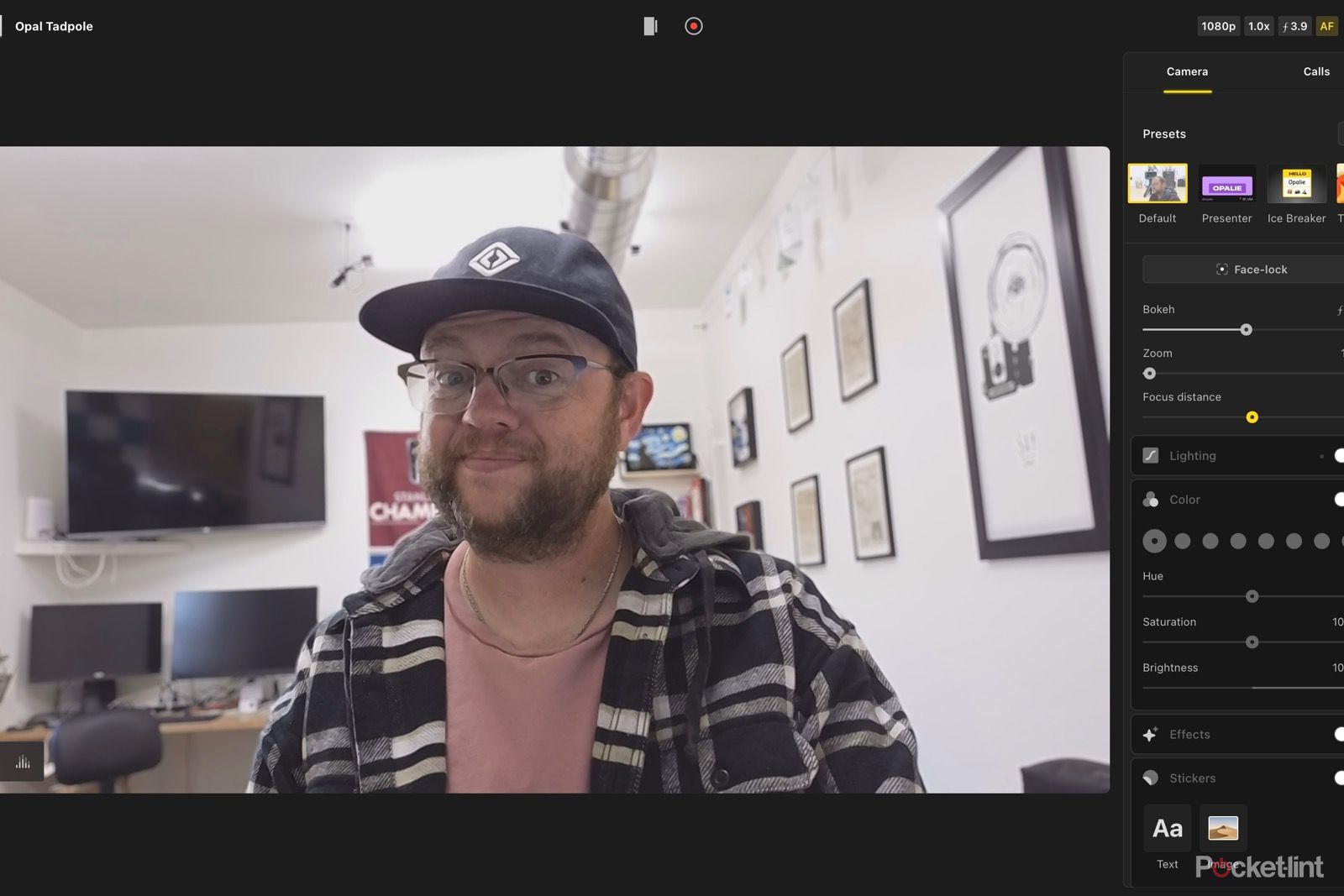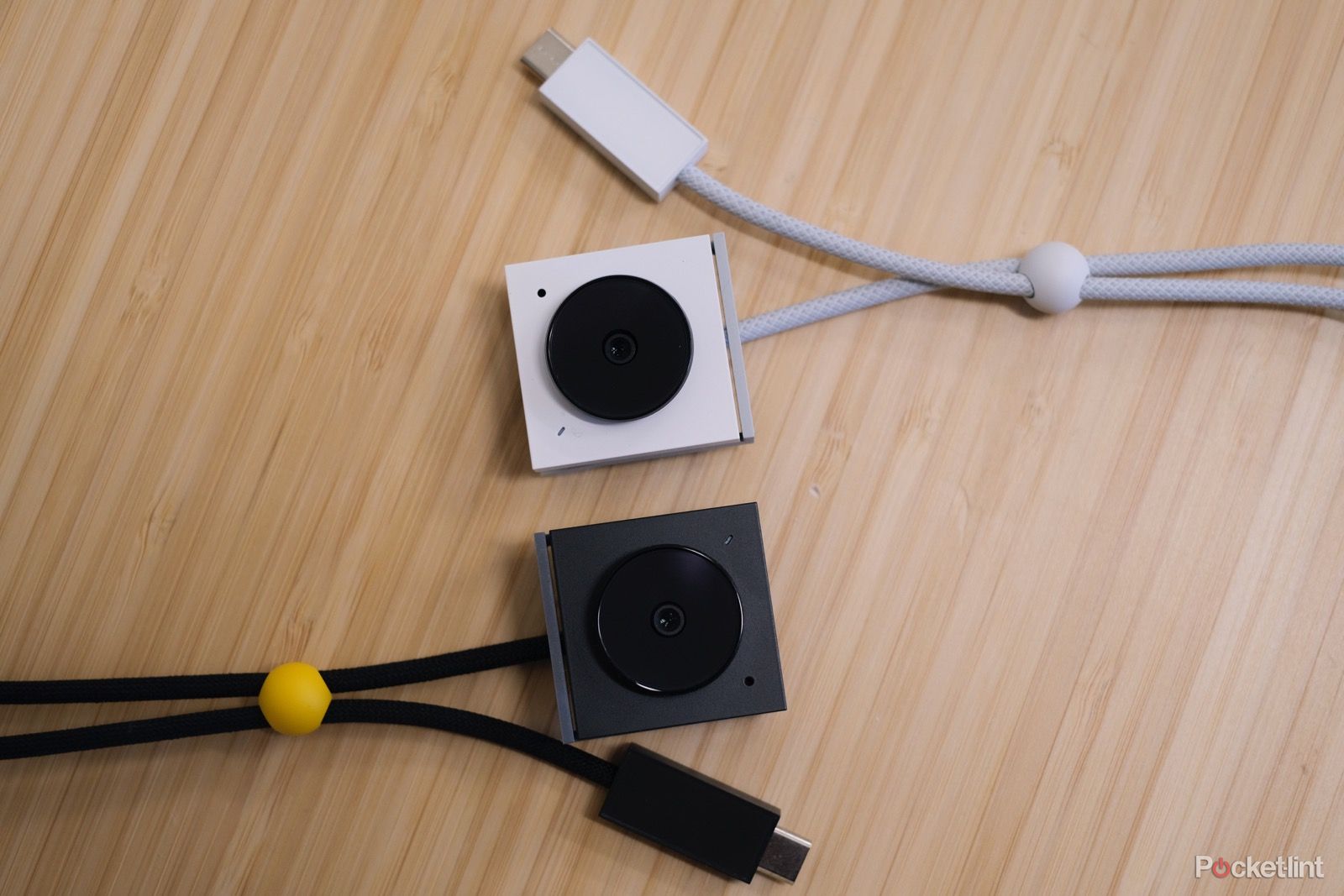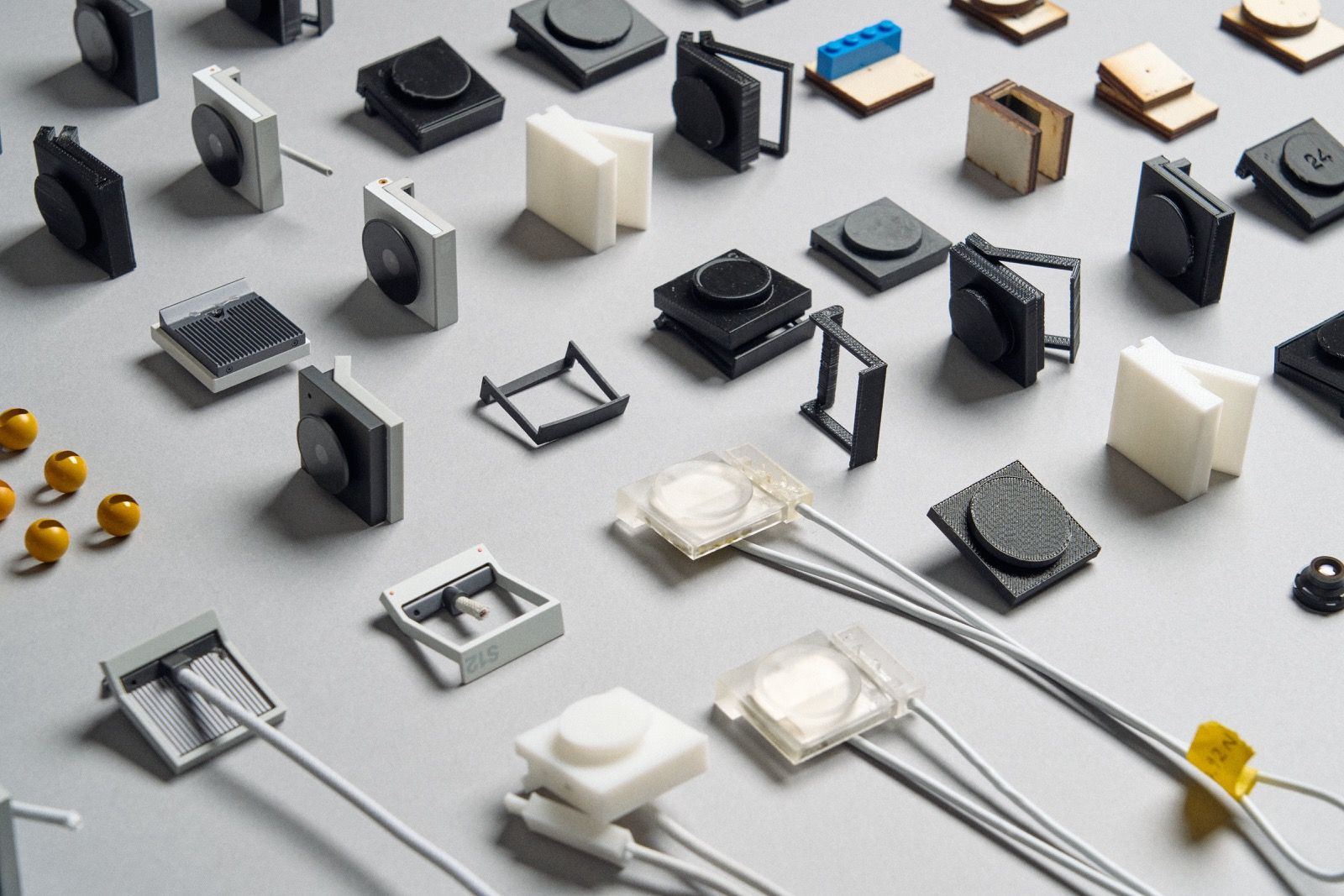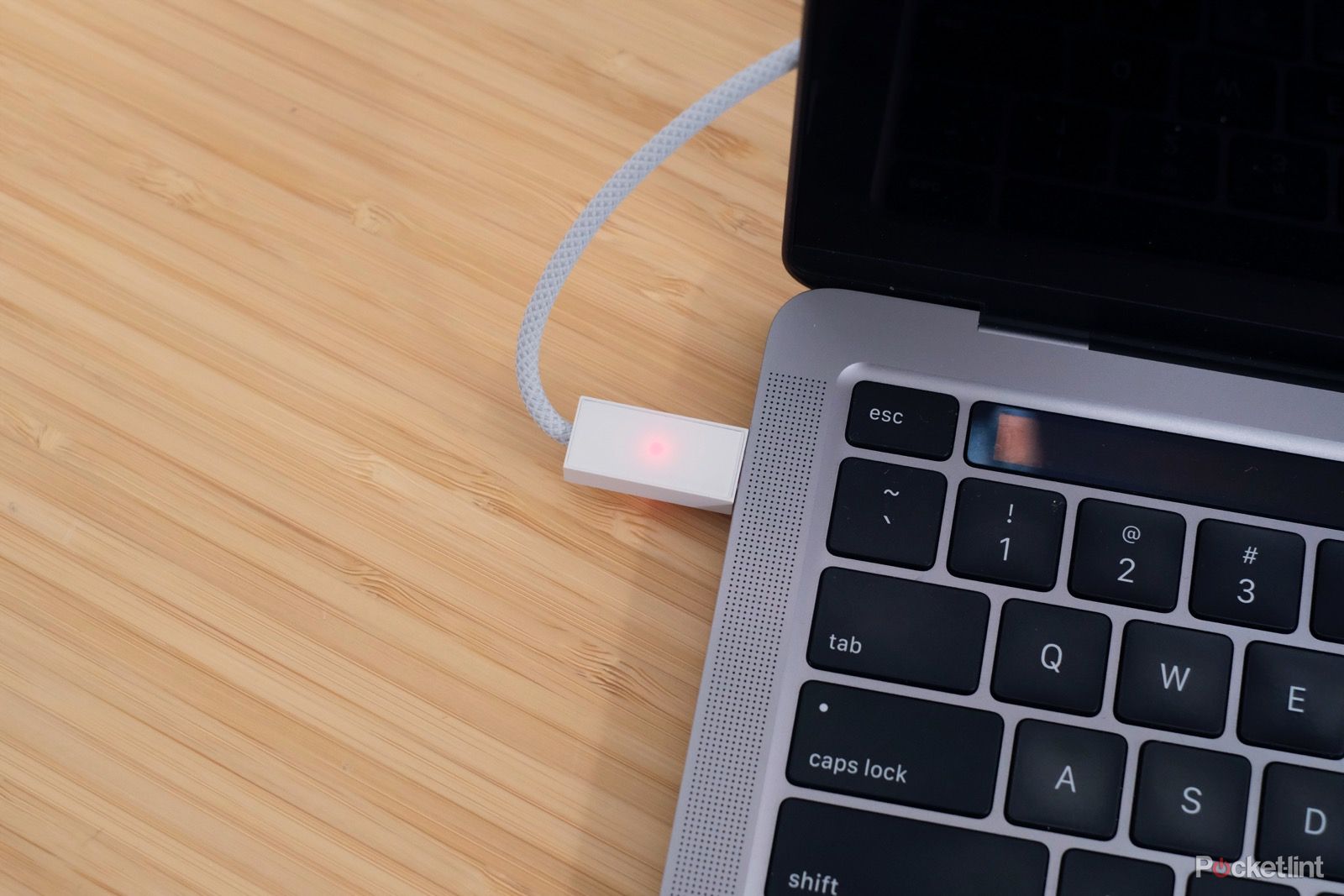Opal's latest webcam isn't meant to be used with an external monitor or even a desktop computer setup. Instead, the $175 Tadpole webcam, the company's second hardware product, is specifically designed to clip onto the lid of your laptop, replacing its mediocre at best built-in webcam.
It has an adorable design that's meant to be portable and easy to take with you anywhere, an undertaking Opal says many of its Opal C1 users were already doing with the much bigger and bulkier webcam.
Opal sent me the Tadpole to go hands-on with it shortly before launch. I haven't spent enough time with it for a proper review, but I do have some early thoughts on one of the most unique webcams I've ever used.
Specs, price and availability
Opal announced the Tadpole on Tuesday, Nov. 14. The $175 webcam was immediately available to order, with shipments beginning the same day. You can currently order it directly from Opal.
Opal Tadpole
- Resolution
- 1080p
- Connection
- USB-C 2.0
- Aperture
- 1.8
- Frames per second
- 30
- Mounting
- Clip
- Compatibility
- Mac, Windows, iPad
- Size (WxDxH)
- 45x20x35mm
- Weight
- 35g
The Tadpole: A webcam designed for laptops
When Opal offered to send me their next product, I wasn't told what I was being sent. Just that the company had a new hardware product related to audio and video. So when the box arrived, I was a bit puzzled by just how small, and perhaps more notably, light it was. Before opening it, I started to make guesses about what was inside. Perhaps it was a wireless microphone for your computer? Maybe it was a slimmed-down version of the Opal C1? I had no clue.
After opening the Tadpole's box, it was immediately apparent that Opal made one of the smallest webcams I've ever seen. The square housing measures 35 x 45mm, and is 20mm deep when you include the clip that's used to attach the camera to your laptop's lid. The aluminum housing comes in two colors. There's a black version and a white version.
The overall design of the camera is very iPod shuffle-like. On the front of the housing is the circular camera lens and a small LED that lights up to let you know when the camera is on.
The clip on the back of the Tadpole opens by pressing at the top of the camera, and as you release, it clamps onto your laptop's lid. There's enough pressure to hold the Tadpole in place, but it's not so much pressure that you're afraid it will break your screen. However, I tested the Tadpole on a couple of different Apple MacBooks and a Microsoft Surface Pro 8, both of which have thick bezels around the top of the display and offer plenty of space for the clip.
I'd be somewhat cautious of the experience on a laptop with really slim bezels along the top of the display.
The Tadpole has a small rubber cover that slips on and off the lens. The cover protects the camera if you are putting it in and out of your backpack or bag with other accessories and adds a layer of privacy when the camera is connected to your computer. Opal also has a $25 case for the Tadpole if you want added protection.
The USB-C 2.0 cable that's attached to the camera is either dark gray for the white model or black for the black model. There's also a small bead on the cable that you can slide up and down to shorten or lengthen the cable. I like that you can slide it up towards the USB-C connector and camera as a form of cable management.
The USB-C connector pulls double duty as a touchpad that triggers the Tadpole's built-in mute feature. A red light on the connector turns on to let you know when it's muted and then turns off when people can hear you.
The first few times I plugged in the Tadpole and turned on its mute feature, I was somewhat impressed that I could guess which side of the connector had the LED light. I later discovered that both sides of the connector have an LED and are touch-capable. Nice design choice, Opal.
 Improved image quality and reliability
Improved image quality and reliability
Opal's C1 webcam garnered a lot of attention because it could stream a high-quality image. It struggled, at times, with autofocus and in low-light environments. In my short time testing it, the Tadpole seems to have addressed both of those issues.
The Tadpole uses a Sony IMX582 sensor that's capable of capturing 4K, 48-megapixel quality images. It has an aperture of f/1.8 that's capable of capturing plenty of light and adding a lot of depth. The sensor, however, is locked to 1080p streaming. That's a decision I have no issues with, as most streaming services don't even support 4K video, so locking it to 1080p makes a lot of sense. You can optimize the camera's performance for resolution that the image sensor is more than capable of capturing.
I haven't spent much time on video calls since getting the Tadpole a few days ago. Still, I have spent plenty of time looking at myself in the Opal Composer app, adjusting settings, and testing the video feed in different lighting conditions.
And, I must say, the image quality is better than what I'd grown accustomed to seeing on the Opal C1. Autofocus, in particular, seems to be fixed, as well. The focus of the C1 was bad enough that I eventually disabled the autofocus feature and locked it down. Otherwise, the camera was constantly making adjustments, which was very distracting for me and those I was on a call with.
I'm yet to have that same experience with the Tadpole. I did, however, experience some delay with the camera adjusting focus after holding something up close to the camera - handy for anyone who wants to show something on stream - and then removing it. The time it took to adjust focus back to my face ranged anywhere from almost instantly to over 10 seconds.
Improved audio
Regarding audio, the Tadpole uses what Opal calls VisiMic technology, which means that the Tadpole uses a directional microphone that captures only audio where the camera can see at a distance between three and five feet. For a laptop user, that's roughly arm's length from the laptop's screen.
Since setting up the Tadpole, I've skipped using my Elgato Wave:3 microphone or my AirPods for any calls and instead set the Tadpole as my input source, and my MacBook Pro's speakers as the output. I haven't received any complaints about audio quality on the handful of calls I've taken, but then again, I rarely do, even when I know it's bad.
But, in the spirit of thoroughness, I did some of my own unscientific testing of the microphone. I recorded myself using the Tadpole's microphone while playing music on either a HomePod off to the side, or on my iPhone 15 Pro Max and moving it around the room.
I even played a coffee shop sounds audio clip at full volume in an attempt to get the full effect. To my surprise, the Tadpole did a really good job at only picking up my voice and removing any other audio whenever the sound was on the side or far enough behind me. The closer the source got to my MacBook, the louder the noise was in the background.
After my various experiments, I have confidence that the Tadpole will block out most peripheral noise, making it possible to take a call in a noisy office or coffee shop, or even at home when you have kids or pets running around.
 Mac and Windows support
Mac and Windows support
One of the most common requests Opal received about the C1 since its launch is when the company would add PC compatibility. So, from day one, the Tadpole offers support for both Mac and Windows.
Opal's companion app, Opal Composer, is only available on Mac, but using the Tadpole is not required. Mac users, however, can fine-tune the camera's settings, such as adjusting the amount of bokeh or depth the camera produces and adjusting color, brightness, and the overall look of the camera's video feed. Additionally, you can do things like add a background or overlay graphics, such as your name, to your video feed.
PC users can plug the Opal Tadpole into their laptop and use it as a standard webcam.
I also tested it out on an iPad Pro running iPadOS 17.1, which has full support for external webcams, and it greatly improves the video feed for FaceTime calls. I tried the camera with Zoom, Google Meet, and WebEx, but none of the apps recognized the webcam was connected - which isn't Opal's fault.
I tested the same apps with a Logitech webcam and had the same results. I could have sworn at least one of those apps updated to add official support for iPadOS 17's webcam feature, but I guess not.
 Verdict
Verdict
The Tadpole is a unique idea with an adorable design that delivers on its promise. I question how much of a demand there is for a dedicated webcam built specifically for use with a laptop. Will people want to carry around, manage, and spend $175 on a webcam designed for a device with a webcam built into it?
It depends on how much they value their audio and video call quality.


